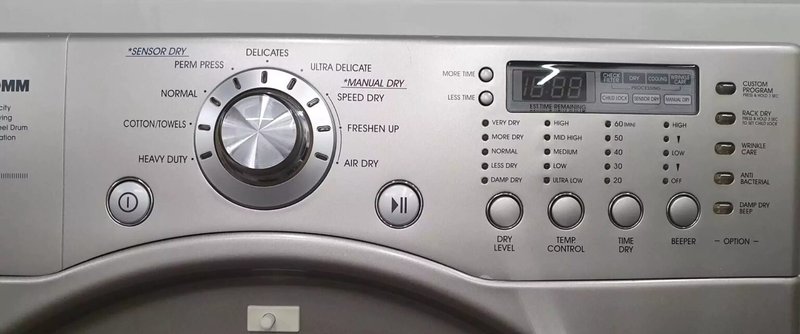
Essentially, the OE error code on an LG dryer usually signals a problem with the machine’s drainage system. It’s like when the sink refuses to drain, leaving you with a standing pool of water. The error indicates that the dryer is experiencing issues with water flow, either not draining properly or facing obstructions. Let’s dive deeper into what this all means and explore common causes and solutions.
Understanding the Basics of the OE Error
You might be wondering, “Why would a dryer have drainage issues?” Well, here’s the deal: modern LG dryers are often equipped with advanced features that use moisture sensors to ensure your clothes are dried perfectly. These features require the machine to handle small amounts of water, even during the drying cycle. When something goes awry, the OE code pops up, indicating a hiccup in this normally seamless process.
One common cause of the OE error is a clogged drain pump filter. Think of this filter as the dryer’s way of catching lint, small clothing remnants, or even the occasional coin. Over time, these little obstructions can build up, much like hair clogging a shower drain, and impede water flow. Cleaning the filter regularly is a straightforward way to prevent this issue.
Another culprit might be the drain hose itself. If it’s kinked or clogged, it’s comparable to a garden hose with a knot—water can’t flow through smoothly. Ensuring the hose is straight and inspecting it for blockages could resolve the error. Remember, a little preventative maintenance goes a long way in keeping your dryer in top shape.
Addressing the Drain Pump and Filter Issues
Let’s imagine your dryer is a diligent worker. The drain pump is part of its supporting crew, ensuring everything runs smoothly by removing excess water from the dryer. If the pump malfunctions, the OE error code often follows, flagging an issue that requires attention. Sometimes a simple reset can do wonders; unplug the machine, wait a few minutes, then power it back on to see if the error clears.
However, if the issue persists, it might be necessary to inspect the drain filter. Think of this as dental floss for your appliance—it keeps everything clean and running smoothly. To clean the filter, locate it (usually accessible from the front panel), remove any visible debris, and rinse it under warm water. Reinstall it carefully and see if your dryer feels happier.
But what if the pump itself is faulty? That’s a little more complicated, akin to a car’s engine having trouble. If you suspect the pump is broken, you might want to consider calling in a professional to diagnose and potentially replace it. While this might sound daunting, it’s important to remember that professional help ensures the problem is fixed thoroughly and safely.
Troubleshooting the Drain Hose
Now, let’s talk about the drain hose. It’s one of those components you’d hardly think about, much like the gutters outside your home until they overflow. If the hose is blocked, the dryer struggles to drain water, and the OE error code becomes its cry for help. Start by inspecting the hose for any obvious kinks or bends. Straightening it out might be all that’s needed to resolve the issue.
If the hose appears kink-free, the next step involves checking for clogs. Disconnect the hose from the machine and run water through it. If the water doesn’t pass through easily, there’s likely an obstruction. Clearing this might solve the problem, similar to clearing leaves from a gutter to prevent a backup.
Once you’ve tackled the basics, reconnect the hose and run a test cycle. If the error continues, the problem might be further inside, such as a blocked internal pipe. Here, professional help is recommended to avoid causing damage in unfamiliar territory.
Preventative Measures and Maintenance Tips
Prevention is better than cure, right? Regular maintenance can keep your dryer running smoothly and prevent the OE error from ever appearing. Start by incorporating a routine check-up for your dryer, much like you’d schedule a car for regular servicing. Every few months, inspect and clean the drain pump filter and hose. This proactive approach can prevent small issues from becoming big headaches.
Another tip is to avoid overloading your dryer. Heavy loads can put extra pressure on the components, much like carrying too many bags at once can strain your back. Balancing the load will not only improve drying efficiency but also reduce wear and tear on your appliance.
Lastly, using high-quality laundry products can also make a difference. Products that leave less residue behind will be kinder to your machine’s drainage system. Taking these simple steps can extend the life of your dryer, ensuring it serves you well for years to come.
In conclusion, while the OE error code might initially seem intimidating, understanding its common causes and solutions can empower you to tackle it head-on. By addressing drainage issues and performing regular maintenance, you can keep your LG dryer in top form and avoid those pesky error codes in the future.